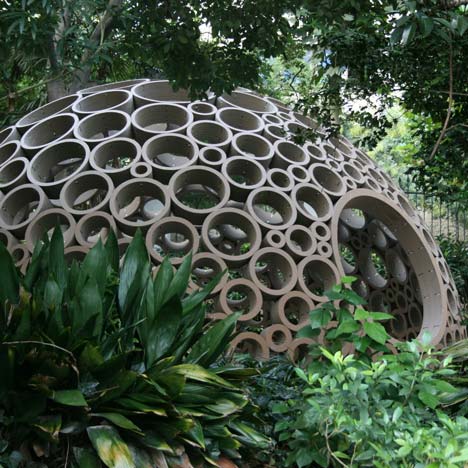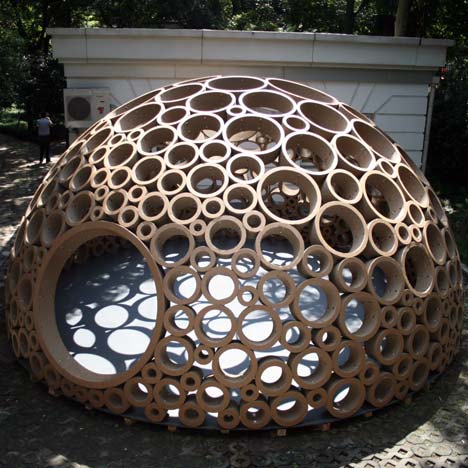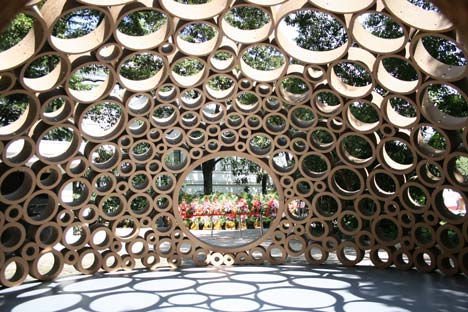
Design students Min‐Chieh Chen, Dominik Zausinger and Michele Leidi of the ETH Zurich, Switzerland, have sent us some images of a pavilion made of cardboard hoops.

Called Packed, the digitally designed pavilion is made up of 409 cylinders of different diameters and thicknesses, connected together with ties to create a dome-shaped grid of circles.

The students used computer technology to implement the manufacture of the components of the pavilion and also its packing and shipping.

The aim of the project is to show how CAAD (Computer Aided Architectural Design) can be exploited, not only to create designs but also to optimise the entire design processes including production and logistics.

The pavilion was on show as part of the 3D paperArt exhibition at the Shanghai Museum of Arts and Crafts in November 2010, as part of the Shanghai Expo 2010.

More student projects on Dezeen »
More pavilions on Dezeen »
Here’s some more information about the project:
Packed a cardboard pavilion by Min‐Chieh Chen, Dominik Zausinger and Michele Leidi with the help of Jeannette Kuo and the supervision of Tom Pawlofsky Shanghai, 2010
Packed is a digitally designed cardboard pavilion that has been exposed at the exhibition 3D paperArt in Shanghai. The exhibition took place at the Shanghai Museum of Arts and Crafts and at the Fudan University in connection with the finishing of the Shanghai world EXPO 2010.
The pavilion is the final group‐project of the Master Advanced Study at the Chair of Computer Aided Architectural Design (MAS CAAD) at the ETH Zurich in Switzerland. The CAAD Chair is specialized in the application of information technologies in the field of architecture and in computer‐controlled fabrication.
The pavilion features a bottom‐up design composed of variable truncated cones, 409 in all, in which these basic constructive elements are filling the entire surface creating a network. The cones negotiate their parameters with each other by adapting their size, form and position. While maintaining their individual diversity and freedom, the elements cooperate together to achieve common goals such as overall stability, shape, illumination, views and spatial quality.
The cones were manufactured using corrugated cardboard in 28 layers, each of which was cut, glued and labelled with a computer‐controlled machine. For all steps, from design, production, logistics and packing in Zurich to shipping and assembly in Shanghai, the process was implemented and optimized by means of self‐made computer programs. By intelligently nesting and packing the cones the amount of material used, the production time and the shipping volume were significantly reduced.
The experiment is intended to demonstrate how architects can use CAAD to customize a design process. It was possible on one side to overcome logistical and fabrication constraints with integrated solutions, and on the other side to exploit the potential of digital design on the aesthetical level.





















